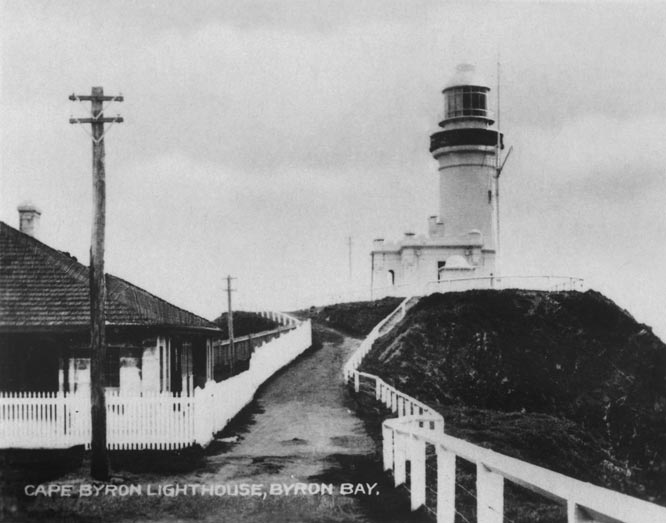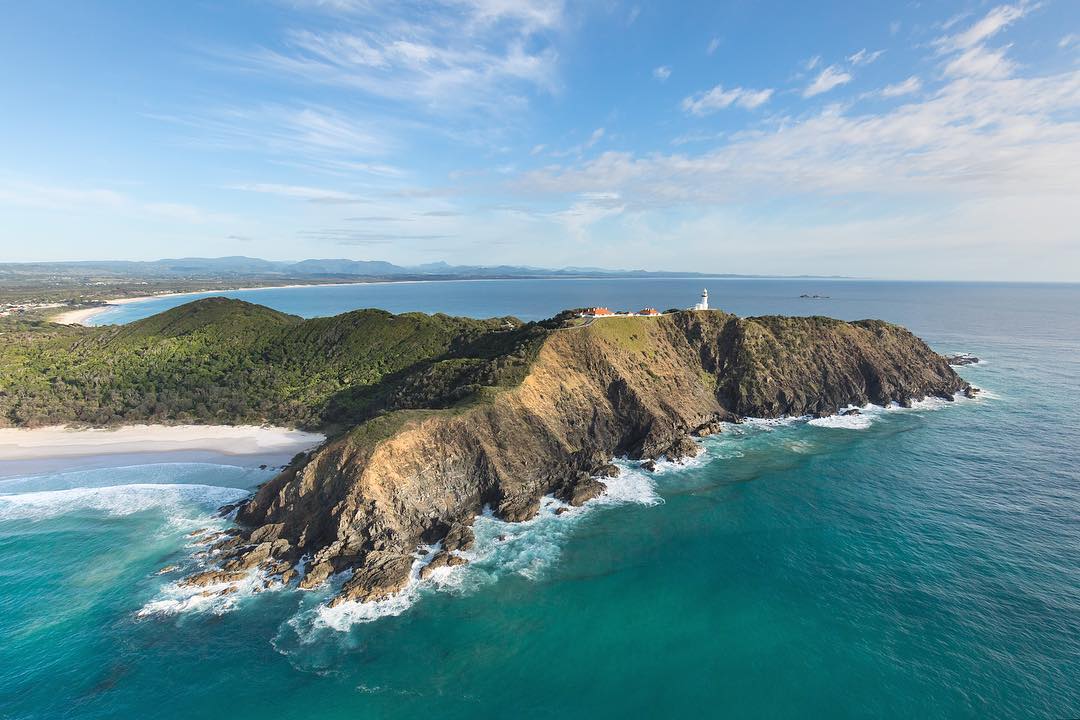Site 17: Lighthouse
PREV NEXT

Lighthouse 1920 (Source RTRL)
With many ships wrecked close to Cape Byron, increasing north-south shipping along the east coast of Australia and the growing importance of Byron Bay as a regional port a lighthouse was built on Cape Byron at the start of the 1900’s. The first light shone on the evening of 1 December 1901.
It is the brightest of all lighthouses on the Australian coastline with the light visible 40 kilometres away. Initially the light was generated by burning kerosene on six wicks (145,000 candela). In 1914 this was changed to burning vaporised kerosene on a single mantle (545,000 candela), then to triple mantles in 1922 (1 million candela) then to an electrically powered 2250-watt bulb in 1959 (3 million candela), a 1000 watt quartz halogen light in 1976 and to an LED light in 2015.
The light is beamed through a bivalve Fresnel lens made of glass prisms manufactured in France. The lens floats in a circular trough of mercury for stability and ease of rotation. The original rotating mechanism was manually wound up several times each night.
The flash sequence of the lighthouse is unique flashing for 0.3 seconds every 15 seconds, every night of the year. The light still shines every night- less as a navigational aid in this age of GPS and more as an iconic link to the past.
Three lighthouse keepers lived in three cottages on the site but three keepers became two in 1959. The last solo keeper departed in 1989 when the operation was automated. Their well-kept cottages can be rented out now but spare a thought for those early keepers as they spent all night every night keeping the light shining.
“Olim periculum nunc salus” etched on the glass doors to the lighthouse translates from Latin as “Once dangerous now safe”. A fitting motto for this powerful lighthouse that since 1901 has guided ships around the easternmost point of the Australian mainland.
The site is now under the responsibility of the Australian Maritime Safety Authority (AMSA) and the National Parks and Wildlife Service of New South Wales.

Lighthouse on Cape Byron (Source Craig Parry)